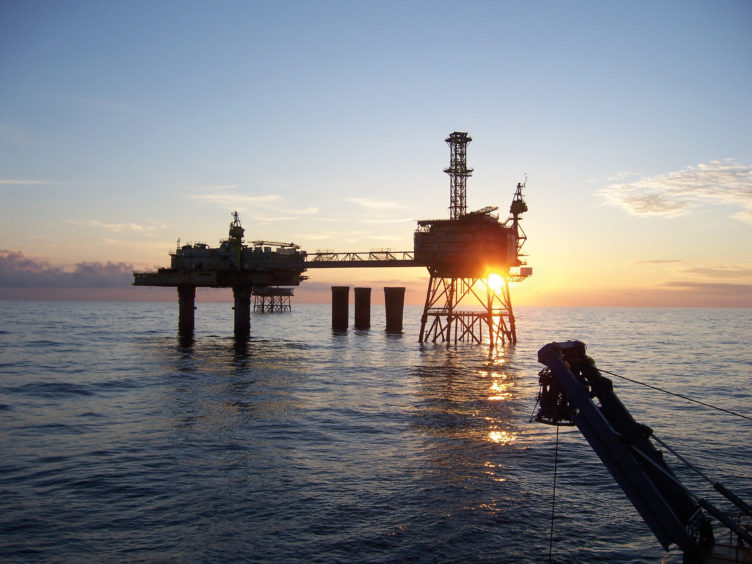
The North Sea Transition Authority (NSTA) has set a new cost target for offshore decommissioning – as the original goal looks set to be missed.
Under the new target, the industry’s total bill for cleaning up the North Sea will be £37bn from next year, which is to be reduced by 10% by the end of 2028 to £33.3bn.
That’s a substantial drop from latest estimates, but the regulator says it is a more accurate picture than before.
What’s changed?
UK taxpayers provide rebates on oil and gas firms’ huge costs for decommissioning, so a target was set in 2017 to reduce the bill by 35%, from £59.7bn to £39bn, based on 2016 prices, by the end of 2022.
By the end of 2021 the North Sea had managed a 25% cut to £44.5bn, according to NSTA data; a cut of £15bn.
That work, with sizeable early wins, has been praised, but latterly the pace has been glacial – the largest yearly reduction since 2019 being a 4% drop, making the original goal looking exceedingly unlikely to be hit.
The NSTA said it is still committed to the 35% goal, which it will report results on next year, but has now set the new target for 2023 – 2028.
How has the new target been set?
The NSTA said the new target has been set by three factors: pricing, inventory, and estimates.
Pricing for contracts is now based on data for 2021, rather than a price point set back in 2016 from the original target.
Inventory, similarly, is now more accurate, with a clearer picture on the amount of oil and gas assets still to be removed right now, rather than estimates of what that could look like back in 2017.
Finally, the regulator said it is moving from a “probabilistic” estimate to a “deterministic” estimate; in essence moving from an unclear cost estimate, with risk involved, to a clearer picture of the real-life situation as it stands in 2022.
Head of decommissioning at the NSTA, Pauline Innes, said: “In 2022 we’ve got far greater confidence in the numbers from operators in our stewardship survey, so we’ve changed the calculation methodology and we’re no longer using a probabilistic one, but we’re using what we’re calling our best estimate so that brings us to the start of a new cost target.
“It is a new data set, with different infrastructure than we had at the beginning, a new price point of 2021, and a new and calculation methodology. When we factor all of that together, our new starting point is £37 billion.”
Time to move the goalposts?
Stephen Jewell, managing director of advisory firm Well Decom Ltd, said the original target of 35% looks “extremely unlikely” given the minimal progrress of recent years.
Revisions to estimates may be justified due to issues like change of infrastructure and cost base, he said.
“However the timing suggests NSTA knows they will not make the 2022 target and they have little room for manoeuvre with the existing methodology. Time to move the goalposts.
“The new deterministic estimate of £37 billion, with a target reduction of 10% to £33.3 billion by 2028, cannot be readily compared with the 2022 £39 billion target derived using the previous probabilistic approach. You have to question why a sound methodology, used to good effect over the last five years is suddenly no longer fit-for-purpose?”
He said the eye needs to be on performance, rather than just forecasts.
“At the end of the day all these figures are simply changing forecasts and do not reflect actual performance in the field. With five years of actual decommissioning cost performance data available through the Stewardship Survey, NSTA should be moving to publish actual vs planned cost data, to better inform industry predictions of overall decommissioning costs.”
Will this save the taxpayer money?
At present, companies can claim 40% relief on their oil and gas decommissioning bills – because of the rate of corporation tax (30%) and supplementary charge (10%), according to petroleum economist Alex Kemp of Aberdeen University.
Costs linked to the windfall tax are not subject to relief, which is a bone of contention for the industry – and its lawyers – at present.
If the supplementary charge were to increase to 20%, then the maximum relief a firm could receive is 50% under UK legislation for decommissioning relief deeds.
Decommissioining cost savings from the NSTA to date – £15bn – and the further £4bn planned over the next five years, should therefore reduce the burden on the Exchequer.
The relief is not a subsidy, however; it is a return on taxes which were effectively overpaid during the life of a production assets.
Policy u-turns impacting decommissioning?
The impact to which recent policy announcements could impact decommissioning are yet to be seen, according to professor Kemp, potentially pushing it down the pecking order.
Last week’s Energy Profits Levy (EPL) – or windfall tax – increase to 35% means the industry is facing a 75% headline tax rate.
There is a 91.4% relief on investment for new oil and gas projects – but not for decommissioning, which could push the latter down the list of priorities.
“The structure of the Energy Profits Levy complicates things quite a bit.
“There will be a lot of rethinking going on now among companies about what they’re going to put their investment funds into and the investment incentives for new field development are very very strong.
“Decommissioning work might be extended because of the pressure of cash flows. One, because they’ve got to pay a windfall tax, and two, they money they can use for investment can get a much more profitable use by developing new projects, rather than spending it on decommissioning. How the balance of that will work out at this point is difficult to say.”
Why change now?
Ms Innes of the NSTA said the regulator “set a target for a five-year basis” and it was appropriate to “see that period out”.
“We felt that if we had changed the rules half way through, people would look and ask why would you be doing that?
“It felt appropriate to continue on that trajectory and see that through to the end point and then have a natural break now and reset it.”
Ms Innes said the original 35% was “always a stretch target” and said even the 25% cut of £15bn is “massive” for the industry”.
“It would be fantastic to hit (35%), but as you’ve indicated, there are some challenges in the global economy which might make that even harder than would have been the case two or three years ago. But you know, ever the optimist – you’ll see what the numbers show us.”
Professor Kemp said: “I sympathise with the issue of making reliable forecasts. It is very difficult and revising data is certainly the order of the day.
“Companies have to revise their investment schedules when faced with volatile gas prices, and faced with a windfall tax introduced only in May and now, from January, increased quite a bit.
“It’s not surprising that decommissioning costs have to be revised from time to time.”
Recommended for you


 © Supplied by NSTA
© Supplied by NSTA © Supplied by University of Aberde
© Supplied by University of Aberde